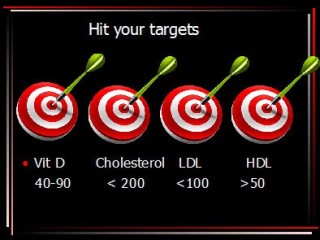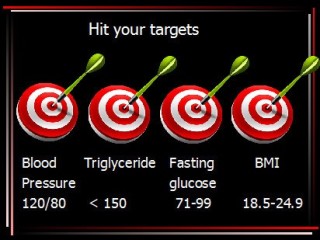By: Lisa McDowell, MS, RD, CSSD
For Red Wings players, the numbers on the backs of their sweaters identify who they are. But more importantly, it’s the numbers they track during the season that help them become the great players they are. And you may be surprised by what numbers they are tracking. Sure, they measure their performance by goals, assists, penalty minutes and ice time. But you might be surprised that they also track things like their levels of Vitamin D, iron and percent body fat.
Understanding these factors, among many others, helps our medical team provide recommendations to players that can improve their performance on and off the ice. Helping them with key elements of their health, including their sleep patterns, their ability to recover from exercise and their overall feeling of well-being, can keep them performing at peak levels, and can help identify those players who are at risk for injury or illness.
Our monitoring begins at training camp in late summer. We use fitness testing as a benchmark of each player’s health and level of fitness. The simple truth is the numbers don’t lie. They tell the medical team a story about what the player can improve upon.
For example, Vitamin D deficiencies are quite common in hockey players. Long Michigan winters, as well as the number of hours spent skating indoors, make it difficult for the body to maintain healthy levels of Vitamin D. And from research, we know athletes with very low levels of Vitamin D have lower testosterone levels, and are at greater risk for bone fractures. These are both conditions that, for obvious reasons, we try to correct for our Red Wings players.

The players have a committed medical team which monitors these numbers for them. But just because you are not a professional athlete does not mean you can’t track some of your own numbers. Today, there are many tools available. For example, you can track your daily steps on your iPhone using its fitness tracker app.
Also, your laboratory results, which are typically gathered by your physician, can be requested by you, and should be kept in a binder with your other personal health information. Each time you have lab values measured, tests conducted or biometric data screenings, update your binder and review any trends. Become your own health advocate. Understanding your health numbers contributes to meaningful discussions with your physician about your health goals.
We have similar discussions with our players. We provide them with a copy of their blood work, review trends with them over time and plan goals with them accordingly. One of the key differences, however, for our athletes is that we are not looking for them to be average. They are elite, world-class athletes, and their physical fitness has unique needs. So when we are looking at their lab values, ‘normal’ ranges may not apply. For example, ferritin, which is critical in assisting our bodies in the delivery of iron and oxygen, has a very broad range of normal (18-270 ng/ml). Athletes who depend on large muscle groups—to skate fast—need a powerful oxygen delivery system and cannot be deficient in iron or ferritin. Obviously, for our players, this is important for their performance. So if we notice a player who typically has a level over 150, but in mid-season drops below 40, we know an adjustment needs to be made for them, typically through changes in what they eat.
Reviewing lab data with each player is part of the process we use in recommending meal plans. An iron-deficient athlete may benefit from cooking in a cast-iron pan, for example, or by replacing rice with teff—an ancient whole grain that is high in iron. They are also encouraged to consume foods high in Vitamin C with their iron source in order to improve iron absorption. In addition, players we identify who have elevated muscle damage markers—determined by testing labs such as creatine kinase in the blood—are counseled on proper attention to recovery and rest. Our goal is to make our players’ metrics perfect on paper to allow for the best chance for a successful season without injury.
Not too surprisingly, our players are very engaged with their own lab values, which is a good example for all of us to follow. They know that the information can sometimes mean the difference for them between being a good player and being a great one. As fans, we see how competitive they are on the ice, but they are also just as competitive with their lab values. Some even participate in a little good-natured ribbing over who has the best labs. For the medical team, this is a healthy sign. A study released last week revealed pro football players with higher vitamin D levels were more likely to get a contract than those with lower levels.
We all want to look, feel and perform at our best. Start by knowing your numbers. Always request a copy of your lab results so you can begin to understand your health profile over time. Some of the numbers I am talking about require blood work. Others require measurements by your medical team. Spend a minute talking with your physician about which screening numbers are important for you.
Technology is making this easier. Devices like Fitbit or the soon-to-be-released Apple Watch can deliver key information to help you monitor your health. Apple Watch can help you live a better life by measuring your calorie goals, physical activity and even how long you are sedentary. Ralph Lauren makes a Polo shirt with a built-in sensor that monitors your heart rate. This information can then be shared with your physician.
If you NEED coffee in the morning, then you NEED more sleep. And if you really want to marvel at the future of athletic performance, check out Nike’s recovery plane where the urinals can monitor dehydration and alert the training staff in real time.
Of note, independent lab experts like Inside Tracker and Wellness FX offer customized packages and professional consultations specific to your needs. Some basic key numbers to get you started include lifestyle factors like diet, sleep and exercise. Others include laboratory and biometric screening data as determined by your primary care doctor and medical team.



Remember, it’s these little things that add up. Small changes you may not notice or even appreciate at the time can result in huge gains. This is so true in sports. Attention to detail makes all the difference. An apple a day or a bowl of oatmeal can help lower total cholesterol and LDL (the bad guys) in a very significant way. Research has proven that consistent intake of this important type of water-soluble fiber can be as effective in lowering cholesterol as taking a statin–without all the side effects. The diet you choose can help your numbers in a powerful way. Eating a more plant-based diet is a great start. These small choices over time have the ability to change your life.
Take the time to not only know your numbers, but also have a meaningful conversation with your physician on specific things you can work on. This can mean more sleep, less sitting, more steps, drinking more water or getting some sunshine to help your Vitamin D. We all can do better to feel better. The most important number may be the one you think of when asked this question—how old would you say you are based on how you feel if you didn’t already know the answer?
About the Author: Lisa McDowell, MS, RD, CSSD is a board certified specialist in sports dietetics and the team dietitian for the Detroit Red Wings. She has worked with professional, collegiate, and Olympic athletes since 1996. Most recently, Lisa worked with Team USA athletes at the 2012 Summer Olympic Games in London.


